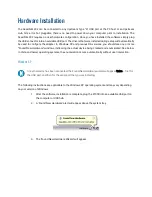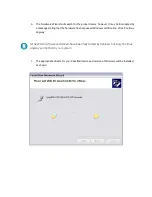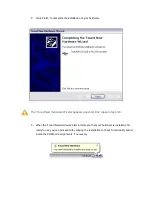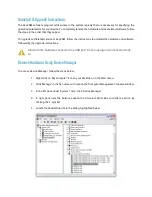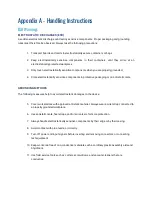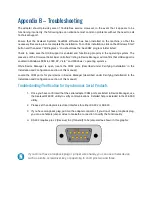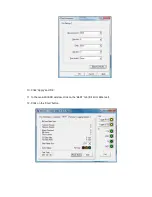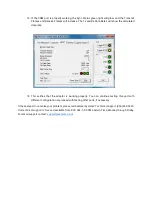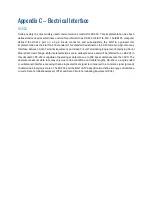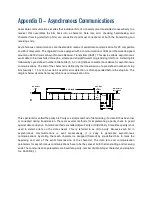
Appendix C – Electrical Interface
RS-232
Quite possibly the most widely used communication standard is RS-232. This implementation has been
defined and revised several times and is often referred to as RS-232 or EIA/TIA-232. The IBM PC computer
defined the RS-232 port on a 9-pin D-sub connector, and subsequently, the EIA/TIA approved this
implementation as the EIA/TIA-574 standard. This standard is defined as the 9-Position Non-Synchronous
Interface between Data Terminal Equipment and Data Circuit-Terminating Equipment Employing Serial
Binary Data Interchange. Both implementations are in widespread use and will be referred to as RS-232 in
this document. RS-232 is capable of operating at data rates up to 20K bps at distances less than 50 ft. The
absolute maximum data rate may vary due to line conditions and cable lengths. RS-232 is a single-ended
or unbalanced interface, meaning that a single electrical signal is compared to a common signal (ground)
to determine binary logic states. The RS-232 and the EIA/TIA-574 specification define two types of interface
circuits: Data Terminal Equipment (DTE) and Data Circuit-Terminating Equipment (DCE).


